 New York, 11 Dul Qo’dah 1434/17 September 2013 (MINA) – Chemical weapons were used on a relatively large scale in the Ghouta area of Damascus in Aug.21 attack, the UN investigators’ report says. UN Secretary General Ban Ki-moon has submitted report at a closed-door meeting in New York.
New York, 11 Dul Qo’dah 1434/17 September 2013 (MINA) – Chemical weapons were used on a relatively large scale in the Ghouta area of Damascus in Aug.21 attack, the UN investigators’ report says. UN Secretary General Ban Ki-moon has submitted report at a closed-door meeting in New York.
“The Mission has concluded that chemical weapons were used on a relatively large scale in the Ghouta area of Damascus in the context of the ongoing conflict in Syria. The attack resulted in numerous casualties, particularly among civilians,” Ban Ki-moon said in a statement published on the UN website.
The UN Secretary General said the conclusions drawn in the report are “overwhelming and indisputable”. The facts speak for themselves,” he added.
Ban called the attack in Ghouta “the most significant confirmed use of chemical weapons against civilians since Saddam Hussein used them in Halabja in 1988.” Anadolu Agency reported as monitored by Mi’raj News Agency (MINA).
Also Read: New York Mayoral Candidate Zohran Mamdani Defies Trump’s Intimidation Tactics
The UN team’s report is based on interviews and eyewitnesses’ accounts which investigators collected at the scene.
The UN investigators spoke to more than 50 survivors, medical personnel and first responders. They also recorded individuals’ symptoms and took biomedical samples, including from hair, urine and blood.
Local medical staff documented many patients’ symptoms consistent with nerve agent exposure. A number were “were diagnosed with intoxification” and “clearly showed symptoms associated with sarin, including loss of consciousness, shortness of breath, blurred vision, eye inflammation, vomiting and seizures,” the report said.
All the samples the UN collected were examined at four laboratories designated by the Organization for the Prohibition of Chemical Weapons (OPCW), the report said.
Also Read: Billionaire Bill Ackman Vows to Fund Rival Candidate to Block Zohran Mamdani
It has been revealed that 85 percent of the blood samples tested positive for sarin. The UN team said that almost all of the 36 patients who showed signs of poisoning tested positive for sarin.
Environmental samples also revealed the use of sarin, the UN scientists said. “A majority of the rockets or rocket fragments recovered were found to be carrying sarin.”
‘Warheads could be original or improvised’
The UN mission concluded that there was “clear and convincing evidence that surface-to-surface rockets containing the nerve agent sarin were used in the Ein Tarma, Moadamiyah and Zamalka [neighborhoods] in the Ghouta area of Damascus.”
Also Read: Netanyahu Lies on Iran Nuclear Program for 30 Years: Cuba’s FM
The inspection team concluded that the munitions linked to one of the impact sites, called Site 1 in the report, matched types of the Soviet-made M14 artillery rocket, “with either an original or improvised warhead.” The UN experts suggested that based on the “orientation and impact craters” and other damage in the area, the rockets were fired from an unspecified area to the northwest.
At the same time, the report does not say who those surface-to-surface rockets belonged to – rebels or government forces.
However, after the presentation of the UN report, Samantha Power, the US Ambassador to the United Nations, said that she was convinced, based on the technical details from the inspectors, the weapons belonged to forces loyal to President Assad’s regime.
“Now the mandate of the UN chemical weapons team was, as you well know, not to investigate capability. But the technical details of the UN report make clear that only the regime could have carried out this large-scale chemical weapons attack,” Power told reporters at a news conference.
Also Read: Trump Says Israel Agreed to Terms for 60-Day Ceasefire in Gaza
Britain’s UN Ambassador Mark Lyall Grant also said that judging by the details, there was “no remaining doubt that it was the regime,” Syria’s government, not the opposition, behind the Aug. 21 attack with sarin gas.
Russia, at the same time, said that the report is “very technical” and did not contain exact details or conclusions that would indicate the Assad regime was involved in the attack.
Ban praised the mission, which he said “performed in battlefield conditions” and despite “difficulties and dangers” carried out a thorough investigation at the site of the attack in a limited time.
War Crime
Also Read: Rashida Tlaib, 19 Congress Members Urge Trump to Stop Gaza Starvation
U.N. Secretary-General Ban Ki-moon slammed the use of banned poison arms as a war crime and called on the U.N. Security Council to impose “consequences” to back a Russia-U.S. plan to eliminate President Bashar al-Assad’s chemical arsenal.
President Bashar al-Assad’s government denies the use the of chemical weapons, and accuses rebels of masterminding the attack to attract international intervention.
But Britain and the United States and France said the details contained in the U.N. report confirm that Syria’s government, not the opposition, was behind the gas attack.
British Ambassador Mark Lyall Grant told reporters there was “no remaining doubt that it was the regime” that was responsible for the attack that left hundreds dead. U.S. Ambassador Samantha Power echoed his remarks.
Also Read: US Approves $500 Million Arms Deal with Israel
The White House has declared that a U.N. report makes it clear that Assad’s regime was responsible.
“The information provided in that report that the sarin agent was delivered on surface to surface rockets that only the Assad regime has, makes clear the responsibility,” White House spokesman Jay Carney said, AFP reported.
The United States says more than 1,400 people died in Ghouta. Its threat of a military strike has eased following the agreement of a plan with Russia. (T/P04/E1)
Mi’raj News Agency (MINA)
Also Read: Florida Enacts New Law Banning Cooperation with Anti-Israel Supporters






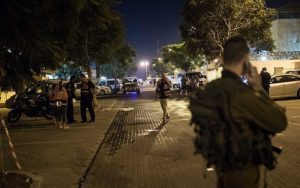
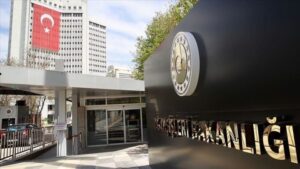
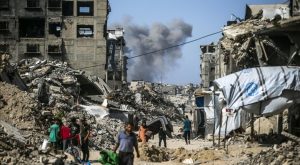

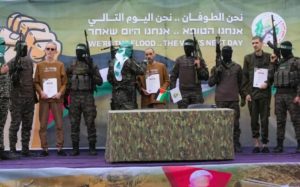
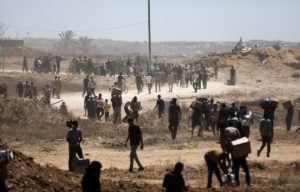

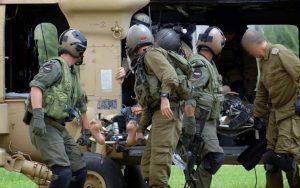



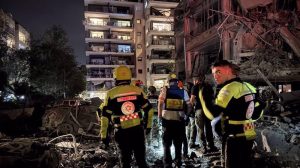


![MUI Chairman for Foreign Relations and International Cooperation, Sudarnoto Abdul Hakim (center) at the One Million Women for Gaza Press Conference entitled "Women Boycott Pro-Israel Products" held at the Swiss-Belinn Cawang Hotel, East Jakarta, Thursday (3/7/2025). [Photo: Arina/MINA]](https://en.minanews.net/wp-content/uploads/2025/07/20250703_144042-scaled-1-300x225.jpg)
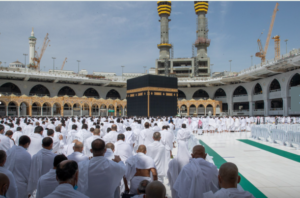




 Mina Indonesia
Mina Indonesia Mina Arabic
Mina Arabic